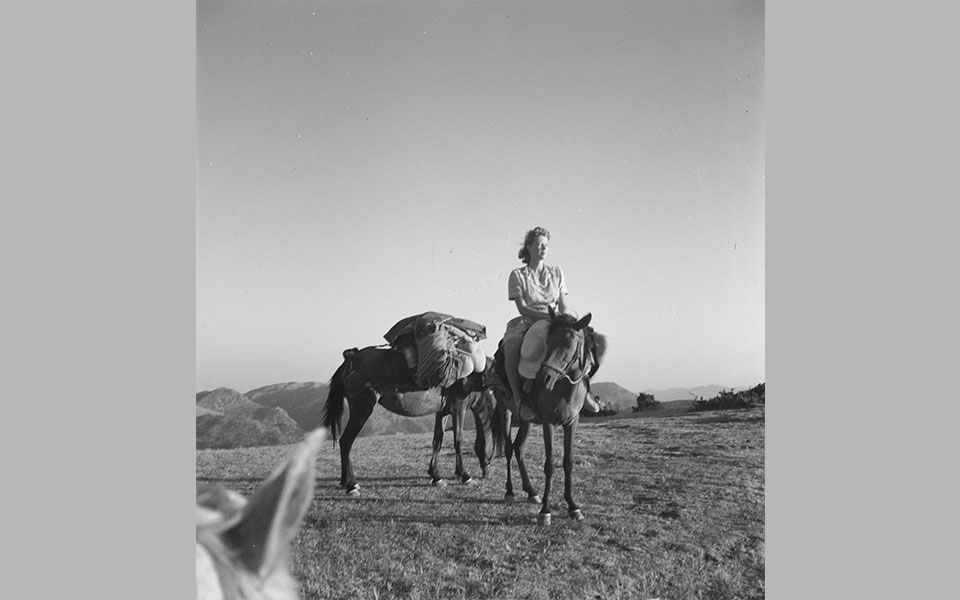CURRENT Athens is an online platform for the non-hierarchical promotion of contemporary art.
Wednesday, Friday: 10:00-18:00 / Thursday, Saturday: 10:00-00:00 / Sunday: 10:00-16:00
Joan and Patrick Leigh Fermor spent most of their time in Greece. While Patrick wrote his famous travelogues, Joan photographed.
It’s just after Christmas in 1944, in Cairo. The world is holding its breath, waiting for WWII to end, and at a party, a man and a woman meet for the first time.
They’re both British. He is dark haired with light brown eyes, 29 years old and already a hero, having had a prominent role behind the lines in the Cretan resistance against the Germans, including in the abduction of General Heinrich Kreipe. He’s just come out of a relationship with a married woman that hurt him deeply.
She is three years older than him, from an aristocratic family, beautiful, blonde and blue-eyed. She wears a wedding ring, although her marriage is practically over. Love strikes them like a lightning bolt.
It sounds like the beginning of a normal love story, but the lives of Patrick Leigh Fermor and Joan Elisabeth Eyres Monsell (later Joan Leigh Fermor) were all but normal.
“Loving does not at first mean merging, surrendering, and uniting with another person (for what would a union be of two people who are unclarified, unfinished, and still incoherent?), it is a high inducement for the individual to ripen, to become something in himself, to become world, to become world in himself for the sake of another person…”.
Patrick, being a famous travel writer, always got the most attention. Joan was less well-known but no less important, and she remained discreetly by his side for six decades. His biographers maintain that if she hadn’t encouraged her Paddy, if she hadn’t supported him with all of her power, it is likely that he wouldn’t have had the same development as a writer. They also recognize her influence in his works.


